#national jewish book award
Text
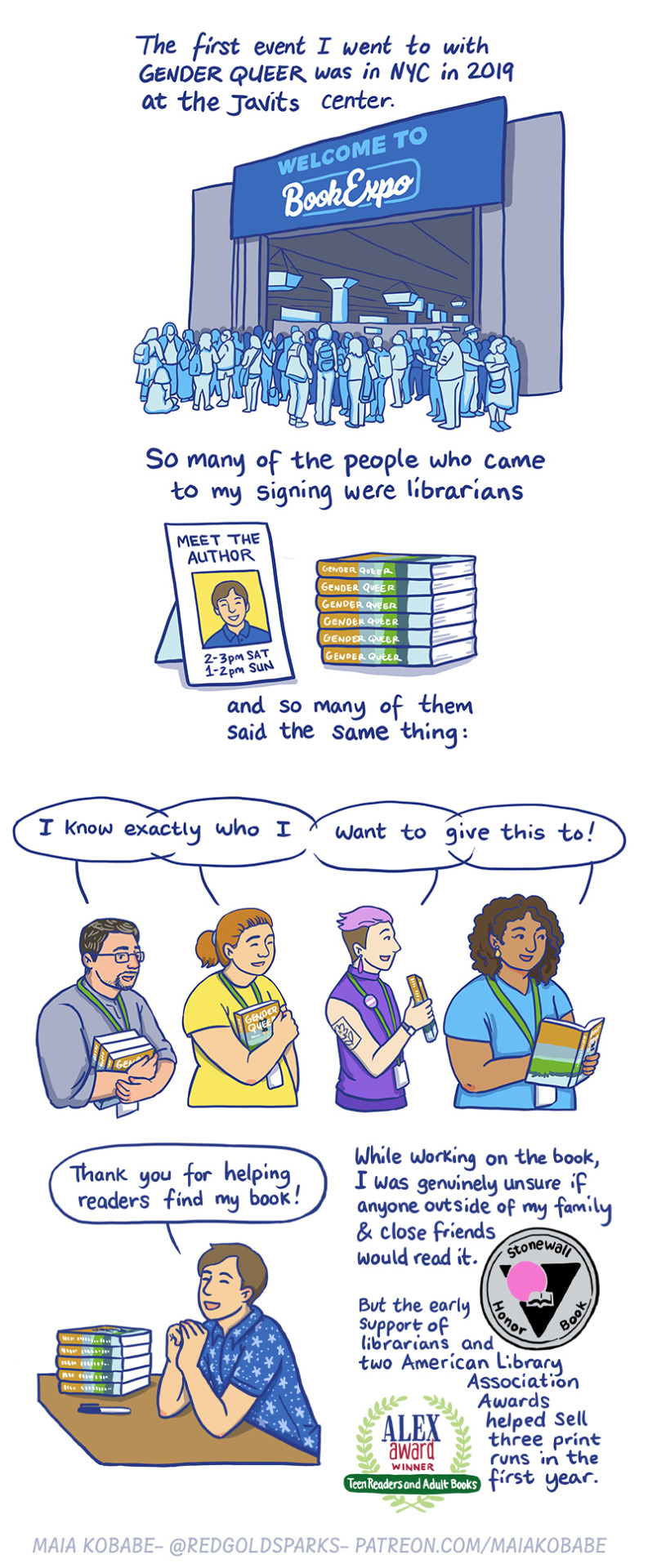
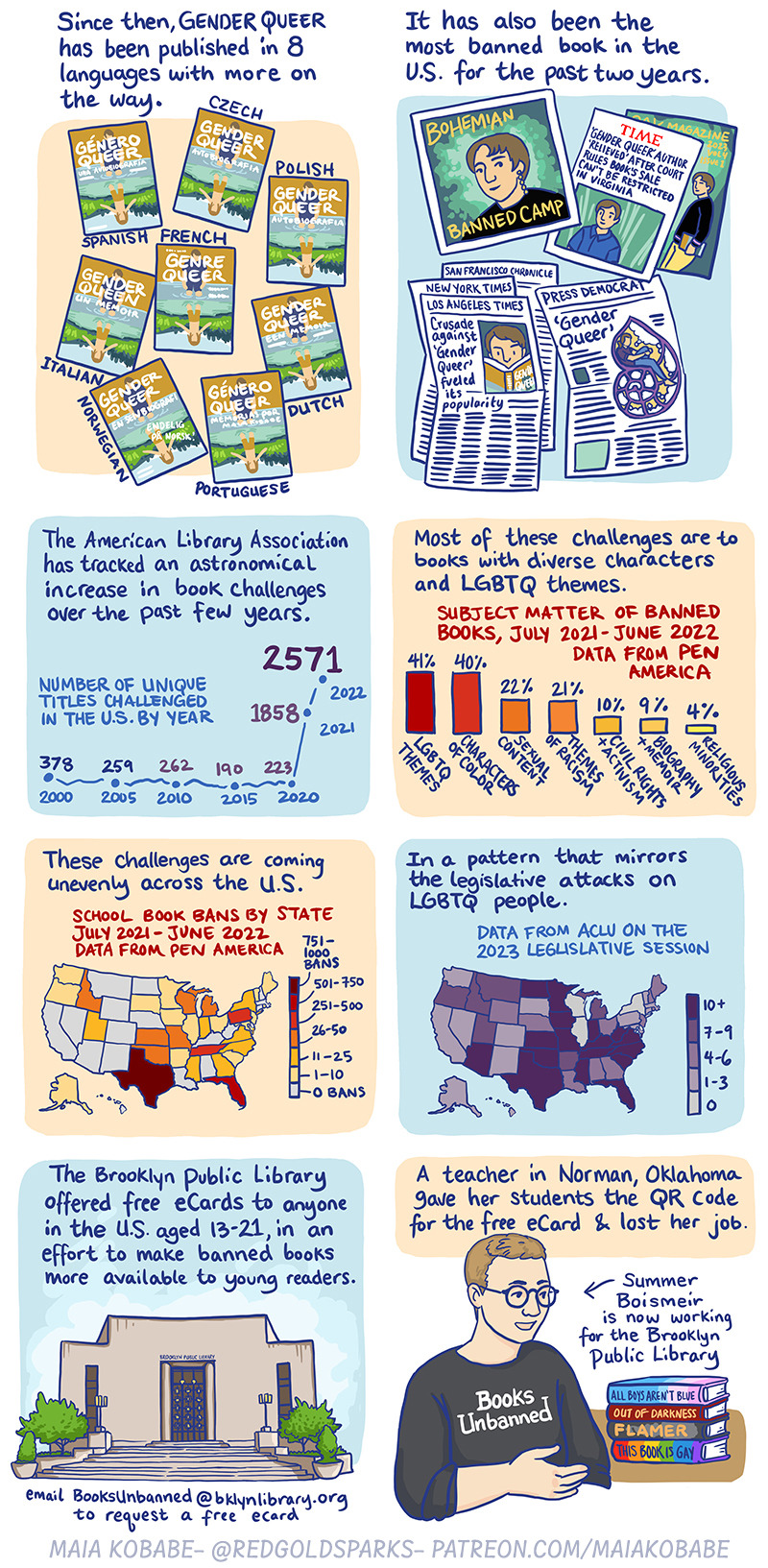



My very last comic for The Nib! End of an era! Transcription below the cut. instagram / patreon / portfolio / etsy / my book / redbubble
The first event I went to with GENDER QUEER was in NYC in 2019 at the Javits Center.
So many of the people who came to my signing were librarians, and so many of them said the same thing: "I know exactly who I want to give this to!"
Maia: "Thank you for helping readers find my book!"
While working on the book, I was genuinely unsure if anyone outside of my family and close friends would read it. But the early support of librarians and two American Library Association awards helped sell two print runs in first year.
Since then, GENDER QUEER been published in 8 languages, with more on the way: Spanish, Czech, Polish, French, Italian, Norwegian, Portugese and Dutch.
It has also been the most banned book in the United States for the past two years.
The American Library Association has tracked an astronomical increase in book challenges over the past few years. Most of these challenges are to books with diverse characters and LGBTQ themes. These challenges are coming unevenly across the US, in a pattern that mirrors the legislative attacks on LGBTQ people.
The Brooklyn Public Library offered free eCards to anyone in the US aged 13-21, in an effort to make banned books more available to young readers. A teacher in Norman, Oklahoma gave her students the QR code for the free eCard and lost her job. Summer Boismeir is now working for the Brooklyn Public Library.
Hoopla and Libby/Overdrive, apps used to access digital library books, are now banned in Mississippi to anyone under 18. Some libraries won’t allow anyone under 18 to get any kind of library card without parental permission.
When librarians in Jamestown, Michigan refused to remove GENDER QUEER and several other books, the citizens of the town voted down the library’s funding in the fall 2022 election. Without funding, the library is due to close in mid-2024.
My first event since covid hit was the American Library Association conference in June 2022 in Washington, DC. Once again, the librarians in my signing line all had similar stories for me: “Your book was challenged in our district"
"It was returned to the shelf!"
"It was removed from the shelf..."
"It was moved to the adult section."
Over and over I said: "Thank you. Thank you for working so hard to keep my book in your library. I’m sorry you had to defend it, but thank you for trying, even if it didn't work."
We are at a crossroads of freedom of speech and censorship. The future of libraries, both publicly funded and in schools, are at stake. This is massively impacting the daily lives of librarians, teachers, students, booksellers, and authors around the country. In May 2023, I read an article from the Washington Post analyzing nearly 1000 of the book challenges from the 2021-2022 school year. I was literally on route to a festival to talk about book bans when I read a startling statistic.
60% of the 1000 book challenges were submitted by just 11 people. One man alone was responsible for 92 challenges. These 11 people seem to have made submitting copy-cat book challenges their full-time hobby and their opinions are having an outsized ripple effect across the nation.
WE NEED TO MAKE THE VOICES SUPPORTING DIVERSE BOOKS AND OPPOSING BOOK BANS EVEN LOUDER.
If you are able too, show up for your library and school board meetings when book challenges are debated. Send supportive comments and emails about the Pride book display and Drag Queen story hours. If you see a display you like– for Banned Book Week, AAPI Month, Black History Month, Disability Awareness Month, Jewish holidays, Trans Day of Remembrance– compliment a librarian! Make sure they feel the love stronger than the hate <3
Maia Kobabe, 2023
The Nib
19K notes
·
View notes
Text
An incomplete "there's a good chance the icon you love and support is a Zionist" list
🌟 Raphael Lemkin, a Jewish Holocaust survivor, whose family was murdered during it. Lemkin is responsible for coining the term "genocide," and for every legal provision that exists today against it. His work against genocide was inspired by his Zionism.
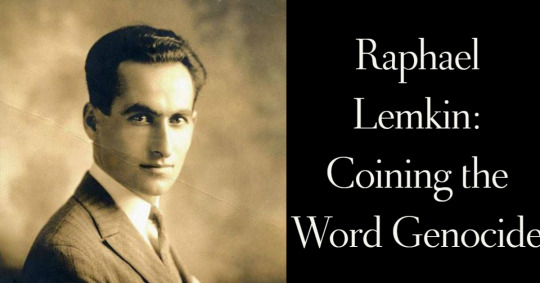
🌟 Martin Luther King, Jr., who did not only support Israel and its right to security, a fellow participant at a dinner with MLK shortly before his assassination quotes him as having stopped a student attacking Zionism, and replied, "When people criticize Zionists, they mean Jews. You’re talking antisemitism." He also encouraged Americans in 1967 to support the Jewish state, as Egypt blockaded the Straits of Tiran, endangering Israeli citizens by cutting the country off from its oil supply.
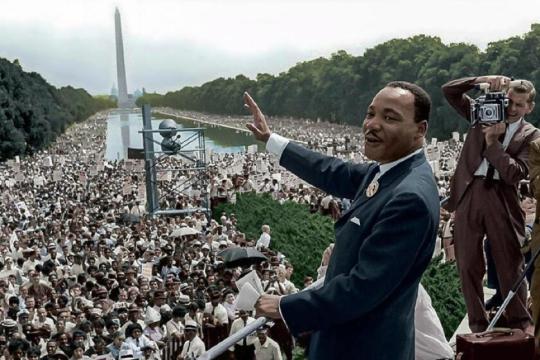
🌟 Emma Lazarus, a Jewish American poet, whose words ("Give me your tired, your poor, your huddled masses yearning to breath free") are engraved on the Statue of Liberty's pedestal, after they helped raise the money needed for its completion. Drawing from the value of Jewish solidarity, she also wrote, "Until we are all free, we are none of us free," adopted as a slogan by intersectionality (while many in the movement exclude Jews from it). She was a great supporter of establishing a state for Jews in the Jewish homeland, having argued for this idea years before the word "Zionist" was even coined.
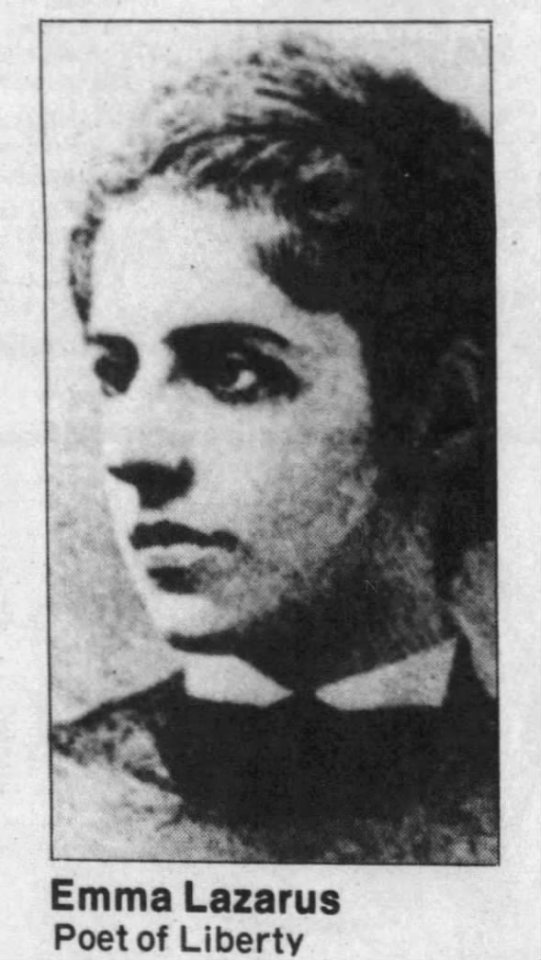
🌟 The 14th Dalai Lama, the leader of the fight against the occupation of Tibet, who was invited in 1994 to Israel, at a time when China's communist regime did its best to prevent his visits anywhere in the world, and who came to Israel more than once, talking about the 2000 years long Zionism of Jewish culture in exile as an inspiration and role model for Tibetans. "Among Tibetan refugees, we are always saying to ourselves that we must learn the Jewish secret to keep our traditions, in some cases under hostile circumstances."
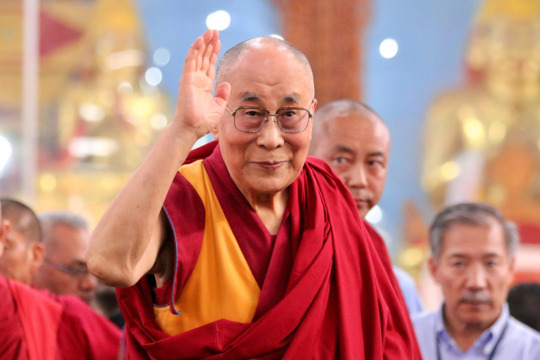
🌟 Ruth Bader Ginsburg, who spoke more than once about how her pursuit of justice is a continuation of that very same thing in Jewish tradition. She had repeatedly referred to American Zionist Jews as sources of inspiration. For example, in 2018, during her fifth visit to Israel, in a speech she gave when receiving the Genesis Award, she mentioned two such women, Emma Lazarus and Henrietta Szold.
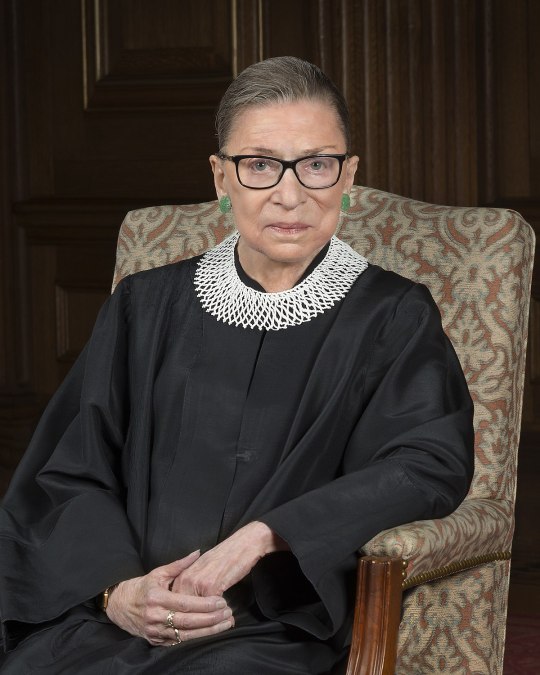
🌟 Nelson Mandela had an ambivalent view of Israel, but repeatedly recognized its right to exist, which makes him a Zionist, he also called upon Arab states to do the same, and was favorable towards the Zionist Jews who supported him during his underground days. Mandela being critical of Israel and still a Zionist is an apt reminder that criticizing the Jewish state and opposing its very existence are NOT the same thing, and only one's antisemitic.

🌟 Felix Salten, the Jewish author of Bambi (the book Disney's movie is based on). The tale was originally a metaphor for Jews suffering antisemitism, something Salten personally had to cope with. He was also an ardent Zionist, feeling the self-liberation at the core of this ideology suited his idea of how to deal with Jew hatred.

🌟 Sun Yat-Sen, who helped end the rule of China's last imperial dynasty, was its first provisional president, and is nowadays honored as an important Chinese leader in both China and Taiwan (sometimes referred to as "Father of the Chinese Nation"). He was an enthusiastic supporter of Zionism. Among other instances of expressing that, he wrote in a 1920 letter to a leader of the Jewish community in Shang Hai about Zionism that it is, "one of the greatest movements of the present time. All lovers of Democracy cannot help but support wholeheartedly and welcome with enthusiasm the movement to restore your wonderful and historic nation, which has contributed so much to the civilization of the world and which rightfully deserves an honorable place in the family of nations."
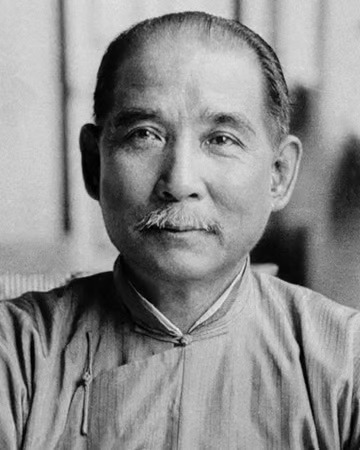
🌟 Magnus Hirschfeld, a gay Jewish sexologist, nicknamed among other things "The Einstein of Sex" and "The Father of Gay Liberation," because his medical and scientific work on human sexuality, as well as social advocacy for women's, gay and trans rights, was nothing short of pioneering. He was persecuted by the Nazis to the point where he died in exile. They broke into his institute of sexual research, where the world's first clinic performing sex reassignments surgeries was located, and burned down the institute's library. Hirschfeld had attended a Zionist conference following the Balfor Declaration of 1917, and his work on sexual liberation found inspiration in young socialist Jewish Zionist workers he met during a visit to the Land of Israel in 1931-2.

🌟 Marcia Langton, a professor and prominent Aboriginal rights activist from Australia, who has been leading the fight against racism and for her community. She spoke out against the hijacking of native rights movements by terrorist sympathizers and antisemites, and has clearly stood against all loss of life, including that of Israelis.

🌟 Felix Zandman, a Holocaust survivor whose work on resistors is integrated into many smartphones, laptops, cars, satellites, hospital ventilators (saving many Covid patients), airplanes and more. Whenever the anti-Israel crowd is scrolling social media on their phones, they're enjoying the work of a Zionist, who enthusiastically supported the State of Israel, and even introduced an important improvement to the Israeli Merkava tank, which has likely saved many Israeli lives, Jewish and non-Jewish alike, and others like him, since Israel's high tech is considered only second to Silicon Valley (going back to at least the 1990's). If they truly wish to boycott everything that's been "contaminated" by Zionism, they should probably just boycott technology.
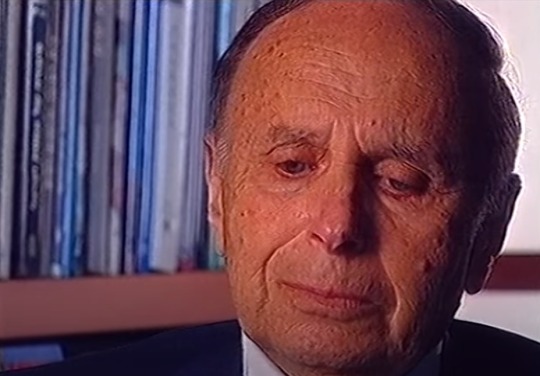
🌟 Rosa Parks, an African American leader of the civil rights movement (and someone who personally demonstrated how one can resist without turning violent). She was one of 200 notable black American leaders who publicly organized to express their support and respect of Zionism as the Jewish right to self-determination, and Israel as the manifestation of that right.
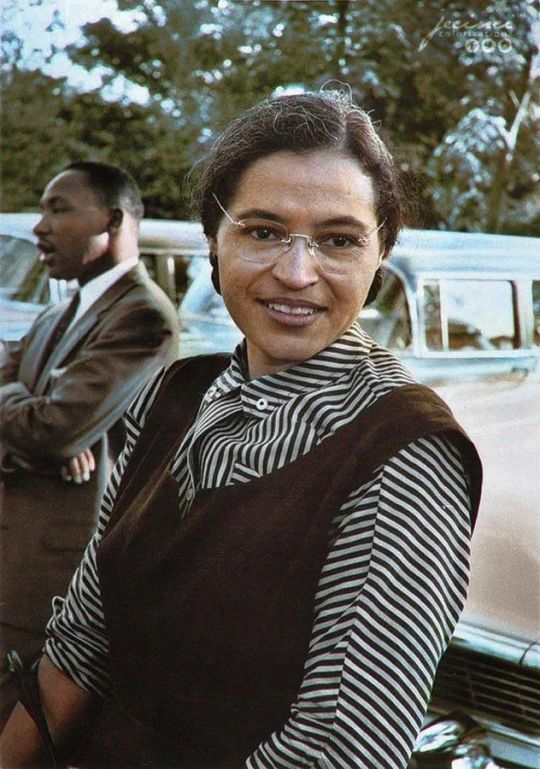
-> Like I said, this is VERY incomplete, even just in terms of how the overwhelming majority of Jews are Zionist, and have been since the inception of Judaism, which is itself Zionist. Over the years, this led to many non-Jewish human and native rights champions to be supportive of Zionism, too. Take note of who is being vilified, when the term "Zionist" is ignorantly used as if it means anything other than belief in the equal right of Jews to liberation and self-determination in the Jewish ancestral land. Especially when it is used as being inherently evil.
(for all of my updates and ask replies regarding Israel, click here)
#israel#israeli#israel news#israel under attack#israel under fire#israelunderattack#terrorism#anti terrorism#antisemitism#hamas#antisemitic#antisemites#jews#jew#judaism#jumblr#frumblr#jewish#resources
412 notes
·
View notes
Text
Here's your daily reminder that...
Jews are only 0.2% of the worlds population but...
Jews make up 14% of the World Total and 38% of the United States of America total winners for the Nobel Prize for Literature (source).
Jews make up 14% of the total winners of the Pulitzer Prize for Fiction 18% of the total winners of the Pulitzer Prize for Poetry; 53% of the total winners of the Pulitzer Prize for Non-Fiction (source).
Jews make up 39% of the total winners of the Antoinette Perry (Tony) Award for Best Play; 54% of the total winners of the Tony Award for Best Book of a Musical (with 62% of all Composers and 66% of all Lyricists of Best Musical-winning productions being Jewish) (source).
Jews make up 40% of the total winners of the Academy Award (Oscar) for Best Original Screenplay; and 34% of the total winners of the Academy Award for Best Adapted Screenplay (source).
Although Jews constitute only 3% of the U.S. population...
80% of the nation’s professional comedians are Jewish (source).
90% of American comic book creators are jewish (source)
38% of the recipients of the United States National Medal of Science are Jewish (Source).
Jews are very successful, with educational levels higher than all other U.S. ethnic groups with the exception of Asian Americans, and income levels the highest of all groups. Six out of ten Jewish adults have college degrees, and 41% of Jewish families report a household income of $75,000 or more” (source)
Jews are a minority across the globe. We've been historically opressed and hated. But these key figures from history are all Jewish and loved, yet many don't even know they're jewish (or they don't know these people in the first place!):
Stan Lee (birth name: Stanley Martin Lieber) - An American comic book writer and editor, Former executive vice president and publisher of marvel Comics, creator of iron-man, spider-man, and more.
Albert Einstein - a Theoretical physicist, Received the 1921 Nobel Prize in Physics, developed the theory of relativity and the "worlds most famous equation" (E = mc^2), and more.
Ruth Bader Ginsburg - Former Associate Justice of the Supreme Court of the United States, co-authored the initial law school casebook on sex discrimination, co-founded the Women’s Rights Project at the ACLU in 1972, and more.
Jack Kirby (birth name: Jacob Kurtzberg) - an American comic book artist, co-creator of Captain America, one of the most influential comic book artists
Harry Houdini (birth name: Erich Weisz) - a Hungarian-American escape artist, illusionist, and stunt performer, noted for his escape acts.
Emma Lazarus - An American author remembered for her sonnet "The New Colossus," Inspired by The Statue of Liberty and inscribed on its pedestal as of 1903.
Julius Rosenthal, Lillian Wald, Rabbi Emil G. Hirsch, Stephen Wise, and Henry Moskowitz - Jewish activists that helped form the NAACP along with W.E.B. Dubois, Ida B. Wells-Barnett, and Mary Church Terrell.
Mark Zuckerberg - Founder and CEO of Meta, a businessman who co-founded the social media service Facebook, and within four years became the world’s youngest self-made billionaire Harvard alumni.
Joseph Pulitzer - a politician and newspaper publisher, his endowment to the Columbia University established the Pulitzer Prizes in 1917, he founded the Columbia School of Journalism which opened in 1912.
Jacob William Davis - a Latvian tailor who is credited with inventing modern jeans and who worked with Levi Strauss to patent and mass-produce them, died.
Irving Berlin - drafted at age 30 to write morale-boosting songs for military revues (including “God Bless America”). Many Berlin songs remained popular for decades, including “Puttin’ on the Ritz,” “Cheek to Cheek,” “Anything You Can Do (I Can Do Better),” “There’s No Business Like Show Business,” and two celebrating Christian holidays: “White Christmas” and “Easter Parade.”
Rabbi Abraham Joshua Heschel - received his doctorate in Berlin. He was arrested by the Nazis in 1938, moved to the U.S. in 1940, and became an influential figure in the 1960s, marching with the Rev. Martin Luther King Jr. in Selma, Alabama, and speaking out against the Vietnam War.
Elie Wiesel - Romanian-American writer and professor, holocaust survivor, nobel laureate, political activist. Authored 57 books including Night, a work based on his experiences as a Jewish prisoner in the Auschwitz and Buchenwald concentration camps
Bob Dylan - an icon of folk, rock and protest music, won the Nobel Prize in literature for his complex and poetic lyrics.
J. Robert Oppenheimer - ran the Manhattan Project, considered the "father of the atomic Bomb," presented with the Enrico Fermi Award by President Lyndon Johnson.
Betty Friedan - co-founded the National Organization of Women and became its first president, wrote The Feminine Mystique (1963) and helped spark the second wave of feminism.
Gloria Steinem - one of the most prominent feminists of all time, launched Ms. Magazine and co-founded the National Women’s Political Caucus with Bella Abzug, Shirley Chisholm, Betty Friedan and Myrlie Evers-Williams, widow of Medgar Evers.
Sergey Brin - an American businessman best known for co-founding Google with Larry Page, president of Alphabet Inc.
Judith Heumann - a founder of the disability rights movement, led a 26-day sit-in at a federal building in San Francisco. The protest spurred implementation of Section 504 of the Rehabilitation Act, a precursor to the Americans with Disabilities Act.
Larry Kramer - co-founded Gay Men’s Health Crisis in response to the AIDS epidemic but was soon ousted over his confrontational activism. He went on to help launch a more strident group, ACT UP, and wrote a critically acclaimed play, The Normal Heart, about the early AIDS years in New York City.
Steven Spielberg - released his critically acclaimed epic film Schindler’s List, based on the true story of a German industrialist who saved Jews during the Holocaust. The movie won seven Oscars and led Spielberg to launch the Shoah Foundation at the University of Southern California, which filmed interviews with 52,000 survivors of the Holocaust and genocides in Nanjing and Rwanda.
Calvin Klein - made designer jeans and the infamous ad starring Brooke Shields revolutionized the fashion industry, sold his company to Phillips-Van Heusen (now PVH) for $430 million. Klein was the first designer to win three consecutive Coty Awards for womenswear.
Daveed Diggs - an American actor, rapper, and singer-songwriter. he originated the dual roles of Marquis de Lafayette and Thomas Jefferson in the musical Hamilton, for which he won a 2016 Tony Award for Best Actor in a Featured Role in a Musical. Along with the main cast of Hamilton, he was awarded a Grammy Award for Best Musical Theater Album in the same year.
And so much more. (a pretty decent list is available here)
Not only that, but the following are all Jewish inventions...
The Teddy Bear - made by Morris and Rose Michtom in honor of Theodore "Teddy" Roosevelt.
The Ballpoint Pen - *the first commercially sucessfull ballpoint pen was made by Lazlo Biro, a Hungarian-Jew, and his brother.
Mobile Phones - made by Martin Cooper, nicknamed the "father of the cellphone", and was born in Chicago to Ukrainian Jewish immigrants.
The Barbie - made by Ruth Marianna Handler, born to Polish-Jewish immigrants.
Power Rangers - made by Haim Saban, a Jewish-Egyptian
Video Games - made by Ralph Baer, a German-Jew
Peeps - made by Sam Born, a Russian-Jewish immigrants who came to the United States in 1909.
Cards Against Humanity - created by a group of Jewish boys from the same high school
Many Superheroes including Superman, Ironman, spider-man, batman, and more!
and more! (an illustrated list available here.)
Conclusion: If you're Jewish, be proud. You come from a long line of successful people. No matter what happened to them, Jews persevered, and they strived for sucess. Be proud of your culture, your history, these are your people. You're Jewish.
(feel free to reblog and add more, or just comment and i'll add it!)
Last Updated: May 31, 5:30 PM EST
#funkowrites#jumblr#jewblr#jewish tumblr#israel solidarity#judaism#jewish#antisemitism#stop antisemitism#op is a proud jew#proud to be jewish#jewish joy#jewish positivity#jew#proud jew#we will persevere
170 notes
·
View notes
Note
(This got soo much longer than I meant for it to be omg... sorry about that!!)
American Holocaust by David Stannard is a flawed book with some dated language, but of everything I've read, I think I like its explanation/argument against this weird sort of... competitive genocide stuff. I'm gonna butcher it a little by cutting out a LOT in order to not nuke your inbox with a super long ask, but:
[…] To say this is not to say that the Jewish Holocaust-the inhuman destruction of 6,000,000 people-was not an abominably unique event. It was. So, too, for reasons of its own, was the mass murder of about 1,000,000 Armenians in Turkey a few decades prior to the Holocaust. So, too, was the deliberately caused "terror-famine" in Stalin's Soviet Union in the 1930s, which killed more than 14,000,000 people. So, too, have been each of the genocidal slaughters of many millions more, decades after the Holocaust, in Burundi, Bangladesh, Kampuchea, East Timor, the Brazilian Amazon, and elsewhere. Additionally, within the framework of the Holocaust itself, there were aspects that were unique in the campaign of genocide conducted by the Nazis against Europe's Romani people, which resulted in the mass murder of perhaps 1,500,000 men, women, and children. [...]
Each of these genocides was distinct and unique, for one reason or another, as were (and are) others that go unmentioned here. In one case the sheer numbers of people killed may make it unique. In another case, the percentage of people killed may make it unique. In still a different case, the greatly compressed time period in which the genocide took place may make it unique. In a further case, the greatly extended time period in which the genocide took place may make it unique. No doubt the targeting of a specific group or groups for extermination by a particular nation's official policy may mark a given genocide as unique. So too might another group's being unofficially (but unmistakably) targeted for elimination by the actions of a multinational phalanx bent on total extirpation. Certainly the chilling utilization of technological instruments of destruction, such as gas chambers, and its assembly-line, bureaucratic, systematic methods of destruction makes the Holocaust unique. On the other hand, the savage employment of non-technological instruments of destruction, such as the unleashing of trained and hungry dogs to devour infants, and the burning and crude hacking to death of the inhabitants of entire cities, also makes the Spanish anti-Indian genocide unique.
[…]
A secondary tragedy of all these genocides, moreover, is that partisan representatives among the survivors of particular afflicted groups not uncommonly hold up their peoples' experience as so fundamentally different from the others that not only is scholarly comparison rejected out of hand, but mere cross-referencing or discussion of other genocidal events within
the context of their own flatly is prohibited. It is almost as though the preemptive conclusion that one's own group has suffered more than others is something of a horrible award of distinction that will be diminished if the true extent of another group's suffering is acknowledged.
Compounding this secondary tragedy is the fact that such insistence on the incomparability of one's own historical suffering, by means of what Irving Louis Horowitz calls "moral bookkeeping," invariably pits one terribly injured group against another […]
Denial of massive death counts is common--and even readily understandable, if contemptible--among those whose forefathers were the perpetrators of the genocide. Such denials have at least two motives: first, protection of the moral reputations of those people and that country responsible for the genocidal activity (which seems the primary motive of those scholars and politicians who deny that massive genocide campaigns were carried out against American Indians); and second, on occasion, the desire to continue carrying out virulent racist assaults upon those who were the victims of the genocide in question (as seems to be the major purpose of the anti-Semitic so-called historical revisionists who claim that the Jewish Holocaust never happened or that its magnitude has been exaggerated). But for those who have themselves been victims of extermination campaigns to proclaim uniqueness for their experiences only as a way of denying recognition to others who also have suffered massive genocidal brutalities is to play into the hands of the brutalizers. Rather, as Michael Berenbaum has wisely put it, "we should let our sufferings, however incommensurate, unite us in condemnation of inhumanity rather than divide us in a calculus of calamity."
The whole thing is available to read on the Internet Archive if you're interested. (This part starts on pg 149, if you'd just like to have the full context without the parts I chopped.)
Additionally, Carrol Kakel's book The American West and the Nazi East, while imperfect, too, is also very useful in getting at the core issue with these arguments and what makes them harmful--regardless of intent. I'm gonna spare you and not quote too much from this one, but the general gist of what it's about and argues in favor of is summed up like this in its conclusion:
In the case of the Holocaust and its contexts, the new ‘optics’ helps us see that – contrary to the prevailing image of ‘industrial genocide’ – many aspects of the Holocaust are akin to earlier ‘colonial genocide’. It is worth noting (and emphasizing) that the distinction I make between ‘colonial genocide’ and ‘industrial genocide’ is not to suggest some type of crude and arbitrary ‘partitioning’ of the Nazi Holocaust; it is, rather, to suggest and reassert the (settler) colonial roots, content, and context of the Nazi project in the ‘Wild East’ – a content and context linked, in Hitler’s and Himmler’s ‘spatial’ and ‘racial’ fantasies, to the ‘North American precedent’. And finally, the new ‘optics’ also allows us to understand that the ‘genocide and colonialism’ nexus holds the key to recognizing the Holocaust’s origins, content, and context; that the Nazi Holocaust is not a copy – but an extremely radicalized variant – of earlier ‘colonial genocide’; and that ‘holocaust’ is not a separate category from, but the most extreme variant of, the blight on human history we call ‘genocide’.
One of the more infamous examples of someone trying to argue against comparison (at least in the NDN circles I run in, anyway) was Deborah Lipstadt claiming that "[What the United States did to Native Americans] was not the same as the Holocaust" because, she says, "The Native Americans were seen as "competitors" for land and resources. There was, therefore, a certain logic-horrible and immoral as it was-to the campaign against the Native Americans."
Just for context, the full paragraph from her blog post:
What the United States did to Native Americans was horrendous. I have not studied it closely and it's not my area of expertise, however, it seems clear that the treatment of the various Native American tribes was revolting. However, it was not the same as the Holocaust. The Native Americans were seen as "competitors" for land and resources. There was, therefore, a certain logic-horrible and immoral as it was-to the campaign against the Native Americans. [Please note: I am NOT justifying the attacks.] The German campaign against the Jews had no logic and was often completely illogical. People who were "useful" to the Germans were murdered or exiled, e.g. slave laborers in factories producing goods for the Wehrmacht and scientists who were producing important technological advances for the Germans. In a prime example of illogic, in June 1944 at the time of the landing at Normandy, when the Germans were truly on the defensive, they used precious ships and men to go to the Island of Corfu and deport the 1200 Jews who lived there. They ended up in Auschwitz. Approximately 100 of this old Jewish community survived.
This is obviously a repulsive take, but the bizarre rationalization of abject evil isn't what I think makes this such a good example of the big issue at the heart of the constant emphasis on "uniqueness." There are plenty of people who hold these "exceptionalist" beliefs without taking it that much further and dismissing other genocides altogether. No, the thing that makes this such a perfect encapsulation imo is the very first sentence, where this historian, this professor of "Holocaust Studies," this woman who's ostensibly spent most of her entire life studying genocide openly admits she's never really bothered to look into what, exactly, happened to all those Indians way back when.
This is ultimately what I, personally, see as the main issue with this line of thinking. The harm doesn't necessarily come from holding the Holocaust up as "worse" than any other genocidal event, though that way of thinking definitely has its own problems, but from holding it up as fundamentally different.
It's the way this view holds it up as completely separate, in its own little bubble of history where we can study it and analyze it and teach about it all we want... all without ever having to broach the subject of colonialism. You can have entire classes where you study every single minute detail of this one specific genocide without ever having to mention or--god forbid--criticize the system that's driven pretty much every other instance of it.
Deborah Lipstadt has spent the better part of a century learning everything there is to know about the Holocaust, but in all that time, she's apparently never felt the need to look into the events that its perpetrators openly and repeatedly referred to as their inspiration.
This is what makes this sort of framing so dangerous imo. You can spend your entire life educating yourself about genocide, but if it's only in the context of one genocide and the belief in the uniqueness and incomparability of that single event is core to your understanding of both it and your worldview as a whole, you will still be completely incapable of recognizing the signs when it starts to happen again.
this is a really informative ask. thank you so much for sending this in (love the citations haha) i think it adds a lot to the overall discussion.
201 notes
·
View notes
Text
HEY, CHECK OUT THIS VERY IMPORTANT BOOK!!
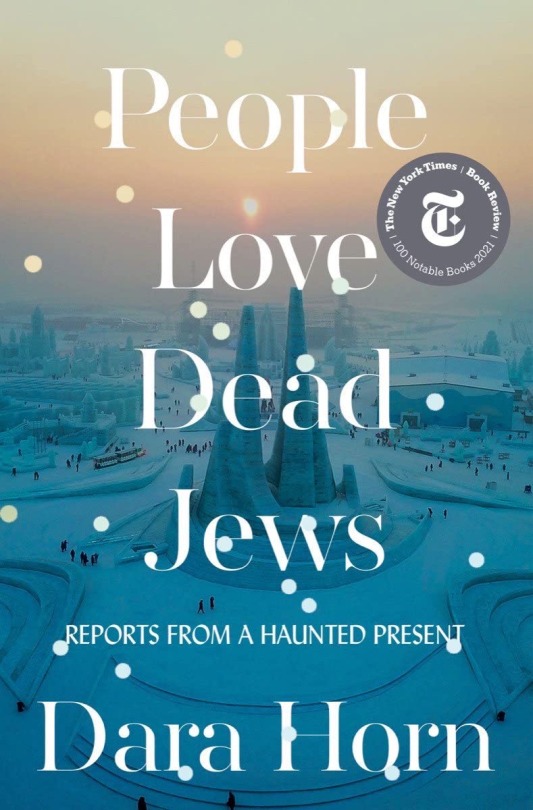
Winner of the 2021 National Jewish Book Award for Contemporary Jewish Life and Practice
Finalist for the 2021 Kirkus Prize in Nonfiction.
Dara Horn has also been publishing penetrating essays since she was a teenager. Often asked by major publications to write on subjects related to Jewish culture—and increasingly in response to a recent wave of deadly antisemitic attacks—Horn was troubled to realize what all of these assignments had in common: she was being asked to write about dead Jews, never about living ones. In these essays, Horn reflects on subjects as far-flung as the international veneration of Anne Frank, the mythology that Jewish family names were changed at Ellis Island, the blockbuster traveling exhibition Auschwitz, the marketing of the Jewish history of Harbin, China, and the little-known life of the "righteous Gentile" Varian Fry. Throughout, she challenges us to confront the reasons why there might be so much fascination with Jewish deaths, and so little respect for Jewish lives unfolding in the present.
As Horn explores the (not so) shocking attacks on the American Jewish community in recent years, she reveals the subtler dehumanization built into the public piety that surrounds the Jewish past—making the radical argument that the benign reverence we give to past horrors is itself a profound affront to human dignity.
#jumblr#jewish tumblr#jewish#book#jewish book#antisemetism tw#antisemitism#people love dead Jews#Jews of color#joc#jews of tumblr#leftists
470 notes
·
View notes
Text
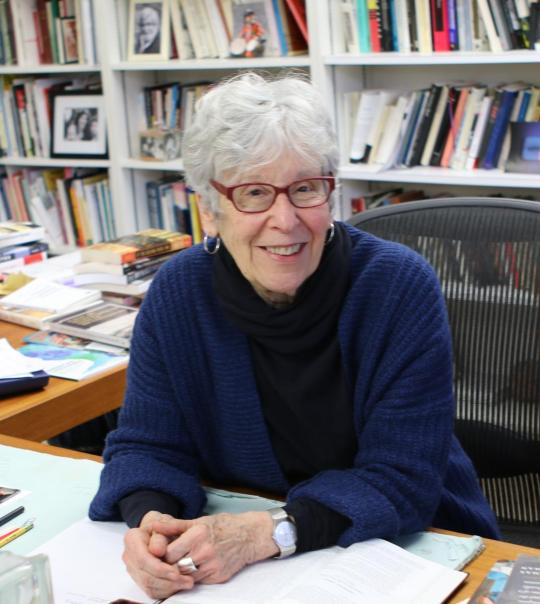
With her book The Return of Martin Guerre (1983), the historian Natalie Zemon Davis, who has died aged 94, attracted a wide readership and inspired future historians. It came out of working as a historical consultant on a film of the same name released the previous year, starring Gérard Depardieu and Nathalie Baye, and directed by Daniel Vigne.
Martin Guerre, a peasant farmer in the 16th-century Pyrenees, left his wife Bertrande to go on a journey, only to have his marital role usurped by an impostor who “returned” pretending to be him. After some years of cohabitation, Bertrande denounced the impostor, her testimony seemingly confirmed by the return of the real Martin Guerre. The impostor was duly tried and executed.
The film-makers’ questions about period detail and behaviour intrigued Davis. But other aspects of the movie genre troubled her, so she went back to the archives and wrote up her own compact account of 120 pages.
A gripping narrative and a lesson in method, Davis’s book raised questions about the reliability of evidence and the motives and worldviews of peasant men and women from a faraway place and time. It is an example of a microhistory, where historians turn away from the big canvas of kings, queens and battles to understand ordinary lives, often through a highly localised case study.
The Return of Martin Guerre was one of a series of works including Society and Culture in Early Modern France (1975), Fiction in the Archives (1987), Women on the Margins (1995) and The Gift in Sixteenth-Century France (2000). Davis’s trademark was the longer essay or biographical study, often focused on marginal or misunderstood personalities, all spiced with a sharp attention to issues of religion, gender, sex, class, money and power. Historical records for her were never dull: she once described them as “a magic thread that links me to people long since dead and with situations that have crumbled to dust”.
Born in Detroit, Natalie was the daughter of Helen (nee Lamport) and Julian Zemon, a textile trader, both children of east European Jewish immigrants to the US. While studying at Smith College, Massachusetts, at the age of 19 she fell in love with Chandler Davis, a brilliant mathematician and socialist activist; they married in 1948 and went on to have a son and two daughters. Her first degree, from Smith (1949), was followed by a master’s at Radcliffe College (1950).
Her life with Davis was productive and fulfilling but also complicated her early career, as his principled stances against McCarthy-era restrictions on political expression led to both him and her being barred from a number of posts, and from travelling abroad. This she needed to do for her doctorate on 16th-century France.
After finally gaining her PhD at Michigan University in 1959, Davis went on to hold positions at Toronto, moved in 1971 to the University of California, Berkeley, where she was appointed professor, and in 1978 to Princeton, retiring in 1996. She became only the second woman to serve as president of the American Historical Association (1987), and the first to serve as Eastman professor at Oxford (1994). In 2012 she was appointed Companion of the Order of Canada, and in the US was awarded a National Humanities Medal.
Davis helped establish programmes in women’s studies and taught courses on history and film. Her AHA presidential address, History’s Two Bodies (1988), summed up her thinking about gender in history. It was also the first such address to be printed with illustrations. Her book Slaves on Screen (2002) was one of the first in-depth treatments of this topic by a professional historian.
In her last two books, Davis returned to the exploration of mixed identities. Trickster Travels (2006) was about the 16th-century scholar Leo Africanus, whose complicated Jewish and Muslim roots in North Africa she expertly unpicked. Listening to the Languages of the People (2022) focused on the 19th-century scholar Lazare Sainéan, a Romanian-Jewish folklorist and lexicographer who published one of the world’s first serious studies of Yiddish, but had to abandon his Romanian homeland for Paris in 1901.
At the time of her death, Davis was completing a study of slave families in colonial Suriname: it is hoped this will appear under the announced title of Braided Histories. In this way she continued to explore unconventional topics, going against the grain of Eurocentric history and looking instead at the boundaries of identity and belonging in very different settings.
Visiting many universities and research centres in her retirement, Davis encouraged younger scholars by conveying the potential of history to inspire empathy and hope for change. While at my own institution, the University of Amsterdam, in 2016, she made it her main aim to talk to students rather than to other professors. In 2022-23 she presented her latest work in online seminars, and wrote and corresponded actively until shortly before her death from cancer.
Chandler died in 2022. Natalie is survived by her three children, Aaron, Hannah and Simone; four grandchildren; three great-grandchildren; and a brother, Stanley.
🔔 Natalie Zemon Davis, historian, born 8 November 1928; died 21 October 2023
Daily inspiration. Discover more photos at Just for Books…?
14 notes
·
View notes
Text
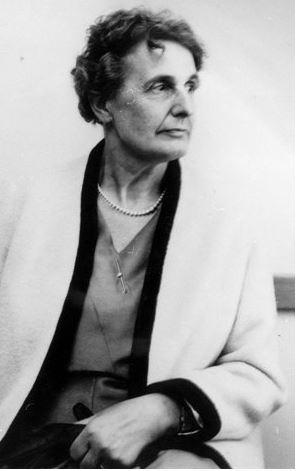
Psychiatrist Stood Up to Evil: Dr. Adelaide Hautval
She refused to assist Nazi medical experiments.
Dr. Adelaide Hautval was a French psychiatrist and devout Christian who was imprisoned in Auschwitz for defying the Nazis. While there, she refused to participate in cruel medical experiments on Jewish inmates and instead secretly provided them with medical care.
Born in Alsace, France in 1906, Adelaide was the youngest of seven children. Her father was a Protestant minister, and Adelaide’s upbringing imbued her with a deep faith in God and desire to be of service to others. She attended medical school at the University of Strasbourg and became a psychiatrist. Adelaide worked with special-needs children and lived a quiet life in southwestern France.
Nazi Germany invaded France in 1940 and for the next two years occupied most of the country, including the coasts and areas with the most economic activity. Adelaide’s out-of-the-way town was spared, and she was mostly unaffected by the German occupation until April 1942, when her mother passed away in Paris. Adelaide needed permission from German authorities to travel to the occupied zone, but they refused to allow it. Determined to attend her beloved mother’s burial, Adelaide decided to go anyway. While crossing the demarcation line, she was captured by German police and sent to prison in Bourges.
Soon after Adelaide’s arrival, Jewish prisoners wearing the yellow star started arriving at the prison. The Jews were treated brutally by the French prison guards, and Adelaide berated the guards: “The Jews are people like everybody else!” They responded that she would henceforth be treated like a Jew. Proudly, Adelaide pinned a scrap of yellow paper to her clothes which said “Friend to the Jews.”
Adelaide was transferred between multiple labor camps before arriving at Birkenau in 1943, where she was housed with five hundred Jewish women prisoners. The camp commander appointed Adelaide physician of her prison block. She used her medical skills to help many of the women. During a typhoid outbreak, she managed to sequester and treat inmates who showed symptoms of typhus, without the guards learning of their condition.
The Protestant psychiatrist was legendary for the sweetness of her bedside manner, and her Jewish patients called her “the Saint.” Decades later, those few who survived remembered Adelaide’s words, “Here, we are all under sentence of death. Let us behave like human beings as long as we are alive.”
As word spread of Adelaide’s medical prowess, she was sent to Auschwitz to work for notorious Nazi Dr. Eduard Wirths. in performing medical experiments. He wanted her to help him perform sterilization operations and medical experiments, without anesthesia, on Jewish women inmates. She absolutely refused to assist Dr. Wirths. He tried to reason with her, “Don’t you see that these people are different from you?” She replied, “In this camp, many people are different than me. You, for example.”
For refusing to assist Dr. Wirths, Adelaide was treated harshly. She survived until liberation, but was in very poor health. Adelaide returned to France, and later advised Jewish-American author Leon Uris while he was writing his famous book, Exodus. Uris interviewed Adelaide extensively about cruel experiments perpetrated by another Nazi doctor, Wladislas Dering, in Auschwitz. After the book was published, Dr. Dering sued Leon Uris for libel. Dr. Adelaide Hautval traveled to London to testify on Uris’ behalf, and described the horrors of Nazi medical experimentation to a packed courtroom. The English judge said that Adelaide was “one of the most impressive and courageous women ever to testify before a court in Great Britain, a woman of strong character and an extraordinary personality.”
In 1965, Israeli Holocaust Memorial Yad Vashem honored Dr. Adelaide Hautval as Righteous Among the Nations. She visited Israel to receive the award and expressed her love for the Jewish people and the Jewish state. Dr. Adelaide Hautval died in France in 1988.
For caring for the sick and dying, and standing up to evil, we honor Dr. Adelaide Hautval as this week’s Thursday Hero.
25 notes
·
View notes
Text
(New York Jewish Week) — The YIVO Institute for Jewish Research welcomed Lithuania’s president to its Manhattan headquarters Monday to honor the Jews who rescued rare books and documents from the Vilna Ghetto and the non-Jewish Lithuanian librarian who protected the same material from destruction by the Soviets.
Lithuanian President Gitanas Nausėda was the guest of honor at a small ceremony unveiling two plaques in YIVO’s Strashun Rare Book Room.
The first plaque recalls the Jewish slave laborers, led by Avrom Sutzkever and Shmerke Kaczerginski, who in 1942 and 1943 defied the Nazis’ orders and protected a trove of Jewish documents and artifacts that the Germans had intended to house in a museum dedicated to the “exterminated race.”
The second plaque honors Antanas Ulpis, then director of the Lithuanian National Book Chamber, who in 1948 hid the archival materials from the Soviets, who also intended to seize and likely destroy them.
The materials saved by the Jewish “Paper Brigade” and Ulpis form the heart of YIVO’s collection of some 25 million rare books, diaries, maps, photographs and films documenting the extent of Yiddish civilization prior to and during the Holocaust.
“These acts [of rescue] are without any doubt unique examples of universal human principles to fight the evil, to fight the darkness with every bit of light,” Nausėda said in prepared remarks. “We say we must remember, we must never forget.”
Monday’s ceremony also marked a decade or more of cooperation between YIVO and Lithuania, who in the years after the war argued over the fate of the Jewish materials that remained in Lithuanian hands after YIVO was relocated to New York. Current YIVO executive director and CEO Jonathan Brent helped broker a deal in 2011 that reestablished YIVO’s presence in Vilna (now Vilnius), and in 2015, YIVO and the Lithuanian Central State Archives began a joint project to digitize the documents stored an ocean apart for what is now called the Edward Blank YIVO Vilna Online Collections. Completed in 2022, it unites YIVO’s prewar collections online.
Blank, a telemarketing pioneer and philanthropist, attended the ceremony along with YIVO board chair Ruth Levine and other YIVO staff and supporters and Lithuanian officials.
YIVO also announced an award to be given in Ulpis’ honor to a Lithuanian who has worked to protect Jewish culture, and that the institute is working with the National Library of Lithuania and other institutions to commemorate YIVO’s 100th anniversary in 2025.
“It’s definitely a partnership,” Brent told the Jewish Telegraphic Agency after the ceremony. “It’s not one-sided. They genuinely understand, as President Nausėda indicated, that our histories are not just interconnected, but it’s part of a single history.”
This month marks the 80th anniversary of the liquidation of the Vilna Ghetto. Before Soviet troops reoccupied Lithuania in the summer of 1944, the Germans and their collaborators had murdered about 90% of Lithuanian Jews.
8 notes
·
View notes
Text
by Shiryn Ghermezian
A one-day pop culture convention set to take place in New York City in November will be the first of its kind to celebrate characters, narratives and creators of Jewish comic books and graphic novels.
“JewCE: The Jewish Comics Experience” is being organized by the Center for Jewish History, which is the comprised of five partner organizations: American Jewish Historical Society, American Sephardi Federation, Leo Baeck Institute, Yeshiva University Museum and YIVO Institute for Jewish Research.
The convention will highlight the Jewish history of the comic book industry and the tradition of Jewish storytelling as it applies to the creation of comic books, and well as Jewish comic book and graphic novel narratives, themes, characters and creators. The event will include a minimum of 10 panels and workshops, the opportunity to meet 24 comic book artists and writers and other programming. Guests are also invited to visit the new Jews in Comics exhibit at the Center for Jewish History in advance of the convention.
“JewCE is designed to be an inclusive convention, celebrating an industry largely created by Members of the Tribe, and promoting diverse Jewish narratives in comics and graphic novel,” the Center for Jewish History said in its description of the event.
Tickets are already on sale for the convention, which will take place on Nov. 12, in-person and on Zoom, with a preview night on Nov. 11 in-person only at the Center for Jewish History. There will also be a JewCE Awards ceremony, to be held on preview night, that will celebrate diverse Jewish comics and graphic novels. Nine awards will be presented by a panel of judges from the industry. The honors include a Combating Prejudice Award, a Book Award in Diverse Jewish Representation and the Macherke Award for Career Contributions to Jewish Comics.
“The Jewish Comics Experience has what it takes to make it to the major league of comic conventions and I could not be more proud to be a part of it,” Fabrice Sapolsky — a comic book creator, publisher and co-creator of JewCE — said in a released statement. “Comic books, graphic novels, and sequential arts are amazing mediums to convey stories. This industry was founded by a group of young — mostly Jewish — creators in the 1930/40s. JewCE will keep honoring the past while promoting present-day storytellers and inspiring creators of tomorrow. It will be an inclusive journey into Jewish diversity through art and creativity.”
JewCE Co-Creator Dr. Miriam Eve Mora, who is also director of academic and public programs at the Center for Jewish History, called JewCE “a love letter to the creators themselves, Jewish and non-Jewish, who have worked to include Jewish characters in their stories, to demonstrate Jewish diversity across the pages, and to provide a visual and cultural home for Jewish readers of all ages to feel seen, included, and embraced.”
“At times only perceptible to those in the know, Jews have long had a home between the covers of comic books of all sorts,” she added. “JewCE brings that home to light, celebrating Jewish characters and creators of all ethnicities, nations of origin, religious observances, genders, sexual orientations, and political affiliations.”
19 notes
·
View notes
Text




Yesterday I posted about a little known about brave woman, Mary Helen Young, who died at the hands of the Nazi's in a concentration camp, today I highlight a lady who met the same end, I think most Scots have heard of hethis time.
Jane Haining, was born on June 6th 1897 near Dunscore, Dumfries & Galloway.
Jane was a talented and adventurous young woman who secured a scholarship to nearby Dumfries Academy and left as Dux of the school.
In 1932, she became matron of the Girls’ Home of the Scottish Mission in Budapest and dedicated the remainder of her life to caring and teaching girls in the school next to the Home. Responsible for some 400 children aged from 6 to 16 - predominantly Jewish children, many of them orphans - she was loved and respected by the students as well as her colleagues.
By 1940, as war spread across Europe, the Scottish missionaries were ordered to return home. Haining refused to leave, believing that her children needed her more than ever. She wrote: “If these children need me in days of sunshine, how much more do they need me in days of darkness?”
In March 1944, the Germany army occupied Hungary and soon began the mass deportations of the country’s Jews to concentration camps. Despite countless orders and entreaties to return home to safety, Haining was steadfast in standing by “her” children; when Haining was arrested by the Gestapo, she was the only foreigner left working at the mission.
On 25 April 1944, two Gestapo men appeared at the Mission, searched her office and gave her 15 minutes to get her things ready. She was taken first to a local prison for questioning. Eight charges were laid against her, including working among Jews, weeping when putting yellow stars on the girls, visiting British prisoners of war and listening to the BBC.
Haining was then deported to Auschwitz concentration camp where, as prisoner number 79467, she was forced into hard labour. Her last message to friends was a postcard asking for food. Haining survived just two months in Auschwitz, she may have died of starvation, illness or disease or been murdered in a gas chamber like many who became too ill to work. She was 47 years old.
The heroism of this ordinary yet extraordinary woman has since been recognised. In 1997, Yad Vashem, Israel's Martyrs' and Heroes' Memorial Authority, honoured Haining as Righteous Among the Nations. Her name is inscribed on a wall of honour in the Garden of the Righteous in Jerusalem.
In 2010 the city of Budapest renamed a section of the embankment along the River Danube – Jane Haining Rakpart – in her honour. And in 2019, Hungary’s annual March of the Living, attended by upwards of 10,000 people and marking the country’s Holocaust Memorial Day, was dedicated to the memory of Haining.
Closer to home, Haining was posthumously awarded a Hero of the Holocaust medal by the UK government in 2010, while two stained glass windows bear tribute to her “service and sacrifice” at her former church in Queen’s Park, Glasgow.
A Heritage Centre at the church in the village of Dunscore was opened in January 2018, and includes artefacts such as her will, her last letter from Auschwitz and a cherished book of wildflowers, which she won as a school prize and took with her to Budapest. A Jane Haining heritage trail in the lanes around the village takes in the stunning Cairn Valley scenery and visits the farm where she was born and brought up, her school and the church. Nearby is a cairn in her memory, erected by the community of Dunscore.
16 notes
·
View notes
Text
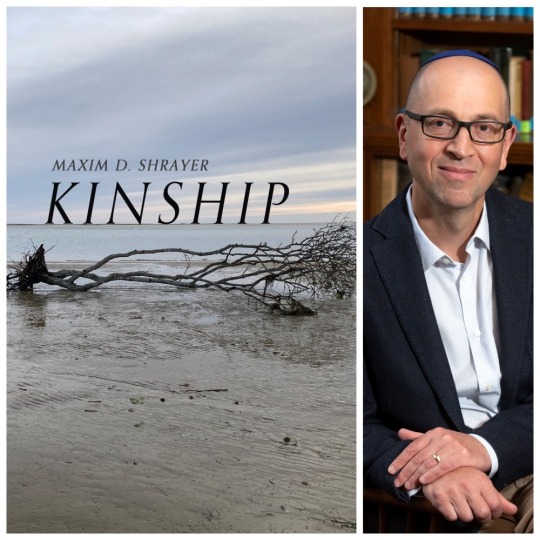
FLP POETRY BOOK OF THE DAY: Kinship by Maxim D. Shrayer
On SALE now! Pre-order Price Guarantee: https://www.finishinglinepress.com/product/kinship-by-maxim-d-shrayer/
Maxim D. Shrayer, bilingual author, scholar, and translator, was born in Moscow in 1967 to a Jewish-Russian family and immigrated to the United States in 1987. A professor at Boston College, Shrayer has authored and edited more than twenty-five books. His recent poetry collections include the Russian-language Stikhi iz aipada (Poems from the iPad, Tel Aviv, 2022) and the English-language Of Politics and Pandemics (Boston, 2020). Among Shrayer’s other books are the literary memoirs Waiting for America, Leaving Russia, and Immigrant Baggage. He is the recipient of a 2007 National Jewish Book Award and a 2012 Guggenheim Fellowship. He lives in Massachusetts with his wife, Dr. Karen E. Lasser, their daughters, Mira Isabella and Tatiana Rebecca, and their silver Jewdle, Stella. #Jewish #Russian #Soviet #poetry #book #history
PRAISE FOR Kinship by Maxim D. Shrayer
“Maxim D. Shrayer‘s new collection radiates the sad airy warmth of a home lost but never forgotten. There is a gentle, inviting glow to the poems, though the light they shed often lands on tragedy. With Kinship, Shrayer has expanded his place in the pantheon of émigré lyricists.”
–Boris Dralyuk, author of My Hollywood, poems and translator of Isaac Babel’s Odessa Stories.
“In Kinship the poet Maxim D. Shrayer takes on our troubled times—including COVID-19, January 6th, the Russian invasion of Ukraine—as well as troubled past times, gracing these events with his honesty, sorrow, and multi-cultural perspective. Born in Moscow to a Jewish-Russian family, then immigrating to America, Shrayer comes to these moments with sensitivity and a unique eye. He sees bats at sunset as “ugly, soft, and fast/ like old snapshots of the Soviet past,” and understands, even lives, “how time can history backward.” One is wiser for reading these poems, and richer for their beautiful language.”
–Elizabeth Poliner, author of What You Know in Your Hands, poems and As Close to Us as Breathing, a novel
Please share/please repost #flpauthor #preorder #AwesomeCoverArt #poetry #read #poetrybook #poems
#poetry#flp authors#preorder#flp#poets on tumblr#american poets#chapbook#chapbooks#finishing line press#small press
2 notes
·
View notes
Photo

Hanukkah Sameach! This book by author Roni Schooter was the winner of the National Jewish Book Award.
15 notes
·
View notes
Text
PSA:
Being judgemental is a form of violence and you should employ it with this in mind.
Many people think it's harmless to go "oh my god, look how fat that guy is" "ugh, she smells like she hasn't showered for a week."
Often very funny jokes and comedy come from mildly judgemental opinions.
But comedy can also be a form of violence. That doesn't make it BAD. Comedy has been used to make fearsome figures like Hitler seen less scary, to belittle people with overinflated egos, and to turn counter culture into pop culture.
Obviously I'm not anti-comedy - my book won an award for its humor - so why am I saying this?
Because its true and its important for people to understand... ESPECIALLY comedians and comedy authors.
Judging others is a form of violence. Judgmental comedy is a form of violence.
Many of the politicians condemning shootings at mosques, synagogues, and gay bars are responsible for these shootings, because they openly judged Muslims, Jews, or LGBTQ people.
Human beings are naturally violent toward those we see as "other". We invaded and obliterated every other species of hominid and took over the entire planet in a geological blink of an eye.
And when we ran out of other species of people to kill, we started on each other and we've been doing it ever since. Hatfields vs McCoys, tribes vs tribes, city states vs city states, nations vs nations, and now alliances vs alliances.
It's human nature.
When we judge people, we "other" them. That's pushing them into the cross hairs of more overtly violent people.
If you push someone in front of a train and the train hits them, you don't get to blame the train.
Laugh at a fat person, and next think you know, someone who heard you is bullying the chubby kid at school.
And maybe you're thinking "what, so I can't judge supremacists?"
I mean, you CAN, although it will other them and make them even less likely to change their minds. But the really important thing is just to ask, "does this person justify violence towards them?"
If it's a white supremacist ranting against the Jews - doing violence to Jewish people - then maybe you're completely okay with hitting them back.
But if it's a poor woman feeding her kids mcdonalds every day because it is cheaper and more filling than stuff from the grocery store, is it violence she needs? Or help?
If it's a worried mom of an autistic kid following doctor advice, does she deserve violence? Or education?
If it's a really fat dude, does he deserve violence? Or empathy for his struggles and assistance?
Think before you judge, and before you crack a joke.
Punch UP. Not down.
11 notes
·
View notes
Text


I’m feeling emotional about Ezra Jack Keats tonight. Guys his dad was worried about him and yet he supported him and brought him supplies. He died two days before a ceremony to give his son an award.
And Ezra made so many good books! He made good art! His dad didn’t want him to have a hard life, but he still brought home paint for him. He still kept his son’s achievements in his wallet. He loved him. Guys he loved him.
IDs:
image one- a screenshot of the Wikipedia article for Ezra Jack Keats. The text shows part of the bibliography tab. Some text is underlined in green. It reads:
“Jack Keats was born Jacob Ezra Katz on March 11, 1916, in East New York, Brooklyn, the third child of Polish-Jewish immigrants Benjamin Katz and Augusta Podgainy. The family was very poor. Jack, as he was known, was artistic from an early age, and joyfully made pictures out of whatever scraps of wood, cloth and paper that he could collect. Benjamin Katz, who worked as a waiter, tried to discourage his son, insisting that artists lived terrible, impoverished lives. Nevertheless, he sometimes brought home tubes of paint, claiming, "A starving artist swapped this for a bowl of soup."(4)
With little encouragement at home, Keats sought validation for his skills at school and learned about art at the public library. He received a medal for drawing on graduating from Junior High School 149. Although unimpressive-looking, the medal meant a great deal to him, and he kept it his entire life (5) Keats attended Thomas Jefferson High School, where he won a national contest run by Scholastic for an oil painting depicting hobos warming themselves around a fire. '5) At his graduation, in January 1935, he was to receive the senior class medal for excellence in art. Two days before the ceremony, Benjamin Katz died in the street of a heart attack. When Keats identified his father's body, he later wrote, "I found myself staring deep into his secret feelings. There in his wallet were worn and tattered newspaper clippings of the notices of the awards I had won. My silent admirer and supplier, he had been torn between his dread of my leading a life of hardship and his real pride in my work. (7)
His father's death curtailed his dream of attending art school. For the remainder of the Great Depression until he was drafted for military service in World War 1l, Keats took art classes when he could and worked at a number of jobs, most notably as a mural painter under the New Deal program the Works Progress Administration (WPA) and as a comic book illustrator. At Fawcett Publications, he illustrated backgrounds for the Captain Marvel comic strip. He spent his military service (1943-45) designing camouflage patterns for the U.S. Army Air Force. In 1947, he petitioned to legally change his name to Ezra Jack Keats, in reaction to the anti-Semitic prejudice of the time.
Keats spent most of 1949 painting and studying in Paris, realizing a long-deferred dream of working as an artist. After returning to New York, he focused on earning a living as a commercial artist, undoubtedly influenced by his father's anxieties. His illustrations began to appear in Reader's Digest, The New York Times Book Review, Collier's and Playboy, and on the jackets of popular books. His work was displayed in Fifth Avenue store windows, and the Associated American Artists Gallery, in New York City, gave him exhibitions in 1950 and 1954.
In his unpublished autobiography, Keats wrote, "I didn't even ask to get into children's
books." In fact, he was asked to do so by Elizabeth Riley of Crowell, which brought out…”
From this, the passages
“Benjamin Katz, who worked as a waiter, tried to discourage his son, insisting that artists lived terrible, impoverished lives. Nevertheless, he sometimes brought home tubes of paint, claiming, "A starving artist swapped this for a bowl of soup"”
and
“Benjamin Katz died in the street of a heart attack. When Keats identified his father's body, he later wrote, "I found myself staring deep into his secret feelings. There in his wallet were worn and tattered newspaper clippings of the notices of the awards I had won. My silent admirer and supplier, he had been torn between his dread of my leading a life of hardship and his real pride in my work."”
are underlined in green.
image 2-
the “wait hold on, I think I need a minute” meme. Showing a drawn white cat-like creature with teary eyes holding a hand out. The text reads “wait. hold on a minute, think i need a moment wait, wait, wait. hold on. need a moment, i need to sit down i think wait. wait. old honh on, wait, please i am breaking
down, hold on, wai”
END IDs.
#jitter jabbers#books#ezra jack keats#the snowy day#whistle for willie#nostalgia#kids books#jewish art#jewish history#make good art
3 notes
·
View notes
Text
Informal Book Review, Sectioned
Title
Caste: The Origins of Our Discontents
Author
Isabel Wilkerson
It is certainly tempting to dive straight into my analysis on the book itself, however I have developed a habit, arguably a good one, of familiarizing myself with the background of authors to inform myself on potential biases or motivations. Biases are not inherently bad. We are shaped by bias thus it is more important to be aware of, and acknowledge, our bias than attempt to do away with it entirely – a venture which will most certainly always fail.
Isabel Wilkerson, the first African American woman to win the Pulitzer Prize in journalism (1994), was born in Washington D.C. in 1961. Her parents came to live in the nation’s capital during the Great Migration, formerly living in Virginia. I won’t go into too much depth here, since I mostly want to touch on what is relevant to her perspective. Of note, she wrote on the experiences of African Americans journeying from the southern states during the Great Migration. After interviewing over 1000 individuals who had participated in the migration, she wrote The Warmth of Other Suns: The Epic Story of America's Great Migration in 2010, a book that won multiple awards and accolades [1]. With this information, we can assume the experiences of her parents greatly impacted the topics she would dedicate most of her time towards studying.
Now onto the book.
While this book does have chapters, the book can best be analyzed through the divided parts, of which there are seven not including an opening excerpt and an epilogue. In this post, I will be writing only on the opening excerpt preceding part one since I spent so much time discussing Wilkerson herself (and these are supposed to be short).
“The Man in the Crowd”
Since this segment is so brief, this portion of the book can best be understood as the hook. Instead of a singular line meant to draw in the audience, Wilkerson describes a historic photograph in vivid detail. It is a photograph from 1936 in Hamburg, Germany. All within the photo are faithfully engaging in the typical Nazi salute except for one man. He was an Aryan, but he was an Aryan who had much to lose under the thumb of the Nazi Party as he was romantically involved with a Jewish woman.
He represents the image of what we hope to be in the face of authoritarianism. Defiant despite fear. Principled despite consequence. Brave despite danger. But the question posed by Wilkerson following this tale is one that invokes a desire to introspect upon the reader. Would we be defiant enough to risk ostracization? Would we be principled enough to stand up to our own family? Would we be brave enough to stand up to a violent despot while recognizing the fragility of our own lives? This excerpt plants these thoughts within the reader so they might better understand the limitations of mental fortitude in the face of oppressive regimes, and recognize that in an authoritarian society, who they are now is not who they may always be.
This opening excerpt sets an intelligent tone, preparing readers to engage with esoteric concepts presented in a way that is more readily digestible to those without an expertise in the humanities. Few adults are unfamiliar with the basic social dynamics within Nazi Germany. Providing this as an opener lets us know this book was written for everyone, not just a scholarly few. Personally, this is one of the best hooks I’ve seen in a non-fiction work to date.
Next Post - Part One
“Toxins in the Permafrost and Heat Rising All Around”
6 notes
·
View notes
Photo

Richard Nathaniel Wright (September 4, 1908 – November 28, 1960) was an author of novels, short stories, poems, and non-fiction. Much of his literature concerns racial themes, especially related to the plight of African Americans during the late 19th to mid-20th centuries, who suffered discrimination and violence in the South and the North. Literary critics believe his work helped change race relations in the US in the mid-20th century. He was born at Rucker's Plantation, between the train town of Roxie and the larger river city of Natchez, Mississippi. He was the son of Nathan Wright who was a sharecropper and Ella, who was a schoolteacher. Both sets of his grandparents had been born into slavery and freed as a result of the war. Each of his grandfathers had taken part in the Civil War and gained freedom through service: his paternal grandfather Nathan Wright had served in the 28th United States Colored Troops; his maternal grandfather Richard Wilson escaped from slavery in the South to serve in the Navy as a Landsman. He gained national attention for the collection of four short stories entitled Uncle Tom's Children. He based some stories on lynchings in the Deep South. The publication and favorable reception of Uncle Tom's Children improved his status with the Communist party and enabled him to establish a reasonable degree of financial stability. He was appointed to the editorial board of New Masses. Excellent sales had provided him with enough money to move to Harlem, where he began writing the novel Native Son. Based on his collected short stories, he applied for and was awarded a Guggenheim Fellowship. Native Son was selected by the Book of the Month Club as its first book by an African-American author. His memoir Black Boy described his early life from Roxie up until his move to Chicago. American Hunger, which was published posthumously, was originally intended by him as the second volume of Black Boy. With Ralph Ellison as best man, he married Dhimah Rose Meidman, a modern-dance teacher of Russian Jewish ancestry. Hemarried Ellen Poplar, a Communist organizer from Brooklyn. They had two daughters. #africanhistory365 #africanexcellence https://www.instagram.com/p/CiFXPcJOd9uwkKWa-L1HXeBlu7tg-Ah-XBjwAM0/?igshid=NGJjMDIxMWI=
2 notes
·
View notes